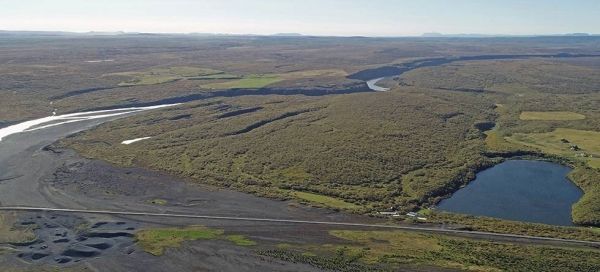“We applied so much force that the raft almost folded up like a clam”, says Willem van der Bilt. He recalls a quiet September day in northern Iceland in 2018. On a little lake named Ástjörn, he and a colleague stood on a raft consisting of a metal platform on top of a rubber boat. A third colleague had been sent to shore, while the two researchers from the Bjerknes Centre for Climate Research and the Department of Geoscience at the University of Bergen struggled to complete their job.
Below them, a plastic tube had been pressed five meters into the lake sediments, deep enough to cut through five thousand years of deposited clay and sand. Deep enough to be stuck.
This was the kind of work they had done many times before. Sediment samples from the bottom of the ocean and from lakes are one of the most important data sources for paleo climatologists. Layer by layer, mud and rotting plants settle at the bottom, the oldest material farthest down and younger material on top – building an archive of everything the water has held for thousands of years.
Continue reading at Bjerknes Centre for Climate Research
Image via Bjerknes Centre for Climate Research


